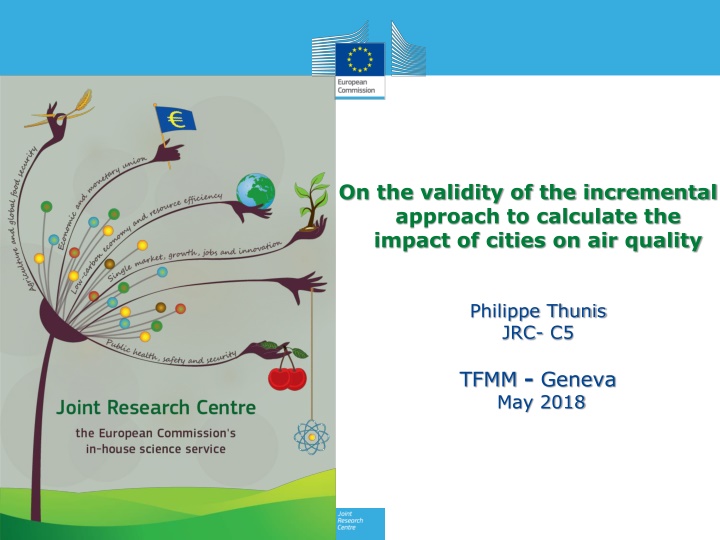
Validity of Incremental Approach in Assessing City Impact on Air Quality
Explore the comparison between incremental and scenario-based methods to quantify the impact of city emissions on air pollution. The study evaluates the urban increment and urban impact, emphasizing the sensitivity to city size and location. Conclusions suggest an underestimation in some cities using the incremental approach and discuss the potential of the urban increment for evaluating air quality models.
Download Presentation

Please find below an Image/Link to download the presentation.
The content on the website is provided AS IS for your information and personal use only. It may not be sold, licensed, or shared on other websites without obtaining consent from the author. If you encounter any issues during the download, it is possible that the publisher has removed the file from their server.
You are allowed to download the files provided on this website for personal or commercial use, subject to the condition that they are used lawfully. All files are the property of their respective owners.
The content on the website is provided AS IS for your information and personal use only. It may not be sold, licensed, or shared on other websites without obtaining consent from the author.
E N D
Presentation Transcript
On the validity of the incremental approach to calculate the impact of cities on air quality Philippe Thunis JRC- C5 TFMM - Geneva May 2018
Motivation: Compare available methods to quantify the impact of city emissions on its own air pollution? What is the urban / regional split? Two main methods are compared: Incremental approach (mod or obs) Urban increment The urban increment is fixed by the spatial concentration gradient between observed/modelled pairs of stations Scenario based (mod only) Urban impact The urban impact is determined by switching off emissions over a given urban area with an air quality model (CTM) More details in Thunis (2018): On the validity of the incremental approach to estimate the impact of cities on air quality, Atmospheric Environment, 173, 210-222
By construction, the urban impact is equal to the urban increment when two conditions are met ( Lenschow assumptions ): 1. City emissions do not influence the rural location (city spread = 0) 2. Background concentrations (obtained when city emissions are switched off) are equal at the city and rural locations (background deviation = 0)
SHERPA assessment in 4 cities SHERPA-CHIMERE has been used to assess how these two components (city spread andbackground deviation) vary with: London Paris (a)distance between the stations pair (b)size of the city Berlin Brussels (c) city (d)pollutant (NO2 and PM2.5) 4
Comparison of the urban increment and urban impact for large city sizes (FUA) Urban impact Background deviation Urban increment City spread City extension (where emission are switched off)
Conclusions For PM2.5, given their long residence time in the atmosphere, the SHERPA-CHIMERE results indicate that for large and medium size cities, no pair of locations can be found that fulfill both criteria The incremental approach leads to an underestimation of the city impact by 30 to 50% in some cities. Given that the urban impact is very sensitive to city size and location, it does not look as a good proxy for estimating the urban impact. But the urban increment can be a useful approach to evaluate CTMs and in particular assess how they reproduce the urban/regional spatial gradients.
